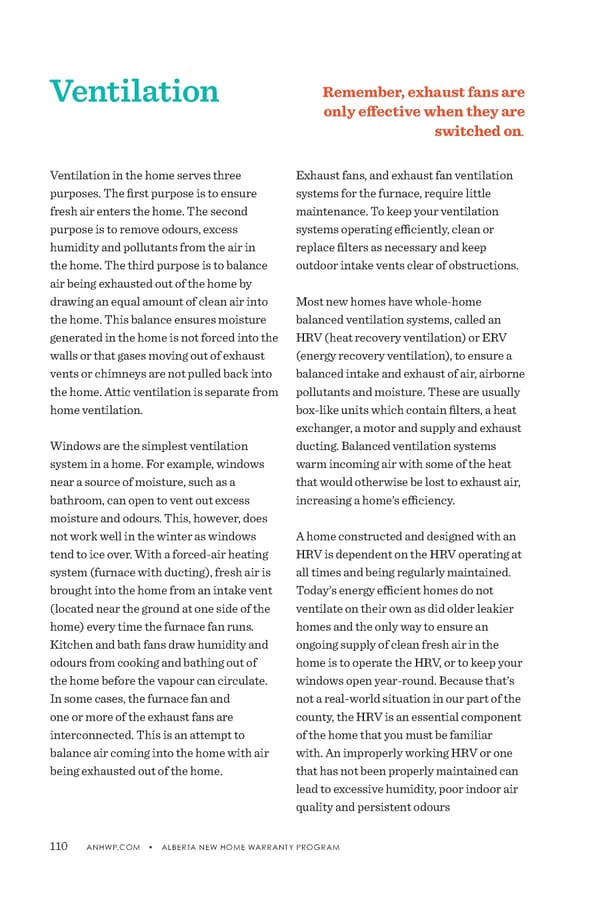Ventilation in the home serves three purposes. The first purpose is to ensure fresh air enters the home. The second purpose is to remove odours, excess humidity and pollutants from the air in the home. The third purpose is to balance air being exhausted out of the home by drawing an equal amount of clean air into the home. This balance ensures moisture generated in the home is not forced into the walls or that gases moving out of exhaust vents or chimneys are not pulled back into the home. Attic ventilation is separate from home ventilation. Windows are the simplest ventilation system in a home. For example, windows near a source of moisture, such as a bathroom, can open to vent out excess moisture and odours. This, however, does not work well in the winter as windows tend to ice over. With a forced-air heating system (furnace with ducting), fresh air is brought into the home from an intake vent (located near the ground at one side of the home) every time the furnace fan runs. Kitchen and bath fans draw humidity and odours from cooking and bathing out of the home before the vapour can circulate. In some cases, the furnace fan and one or more of the exhaust fans are interconnected. This is an attempt to balance air coming into the home with air being exhausted out of the home. Exhaust fans, and exhaust fan ventilation systems for the furnace, require little maintenance. To keep your ventilation systems operating efficiently, clean or replace filters as necessary and keep outdoor intake vents clear of obstructions. Most new homes have whole-home balanced ventilation systems, called an HRV (heat recovery ventilation) or ERV (energy recovery ventilation), to ensure a balanced intake and exhaust of air, airborne pollutants and moisture. These are usually box-like units which contain filters, a heat exchanger, a motor and supply and exhaust ducting. Balanced ventilation systems warm incoming air with some of the heat that would otherwise be lost to exhaust air, increasing a home’s efficiency. A home constructed and designed with an HRV is dependent on the HRV operating at all times and being regularly maintained. Today’s energy efficient homes do not ventilate on their own as did older leakier homes and the only way to ensure an ongoing supply of clean fresh air in the home is to operate the HRV, or to keep your windows open year-round. Because that’s not a real-world situation in our part of the county, the HRV is an essential component of the home that you must be familiar with. An improperly working HRV or one that has not been properly maintained can lead to excessive humidity, poor indoor air quality and persistent odours Ventilation Remember, exhaust fans are only effective when they are switched on . 110 ANHWP.COM • ALBERTA NEW HOME WARRANTY PROGRAM
 ANHWP Care & Maintenance Guide 2022 Page 111 Page 113
ANHWP Care & Maintenance Guide 2022 Page 111 Page 113